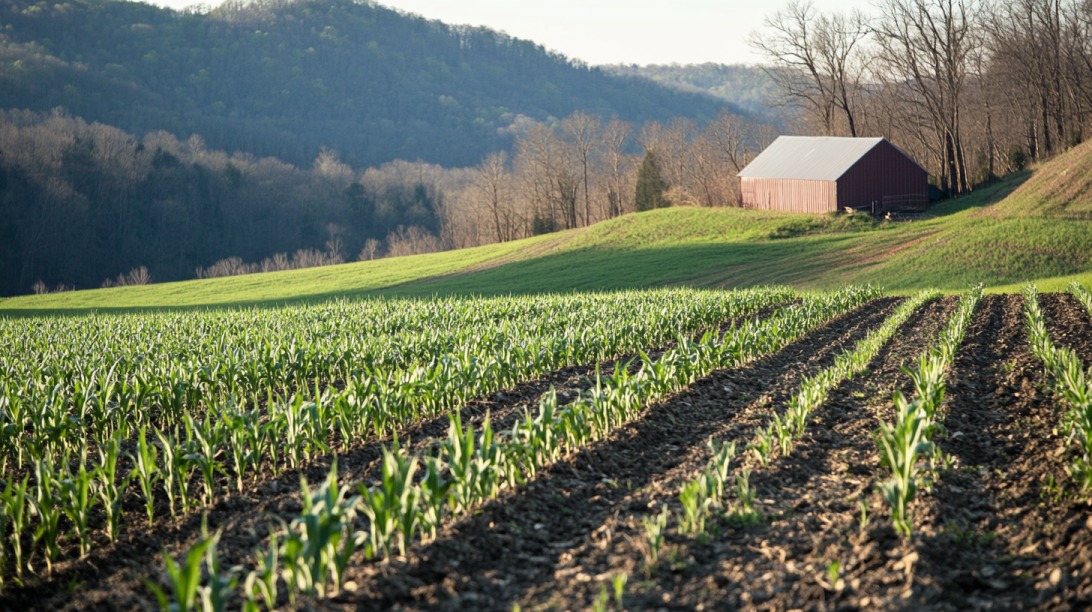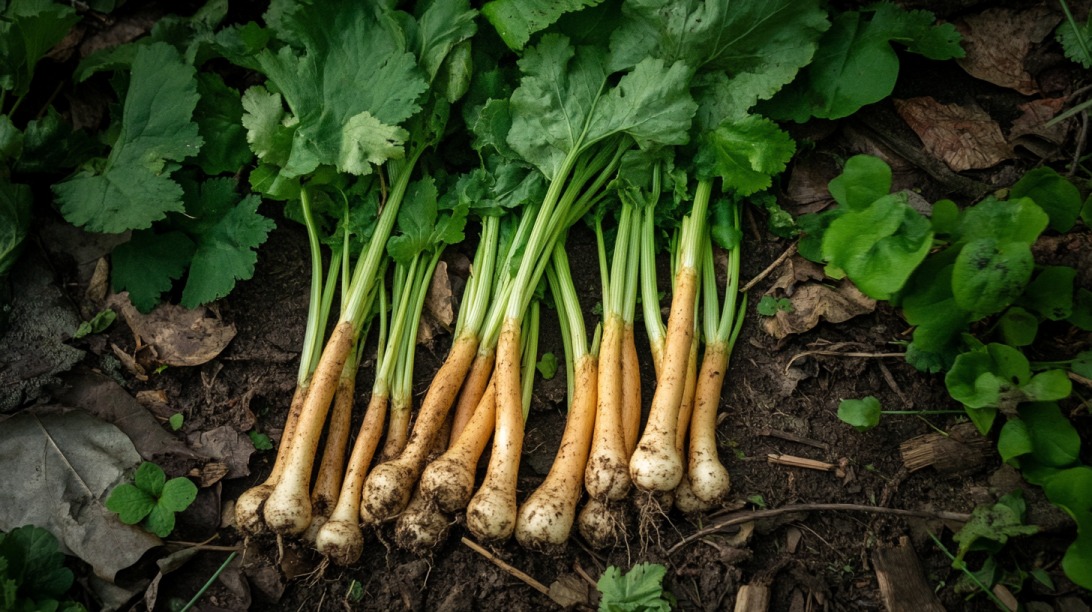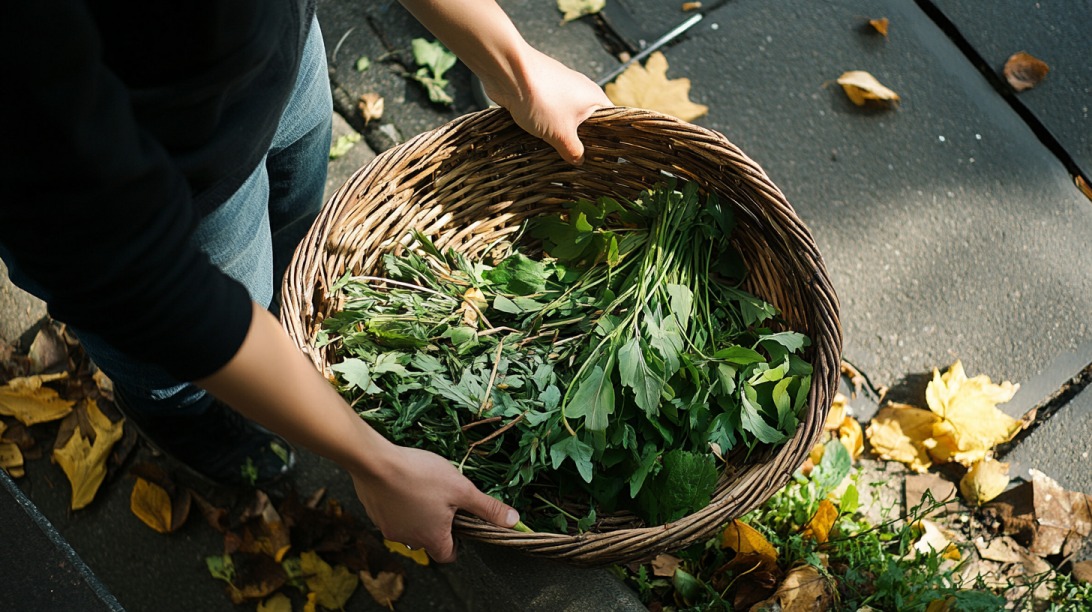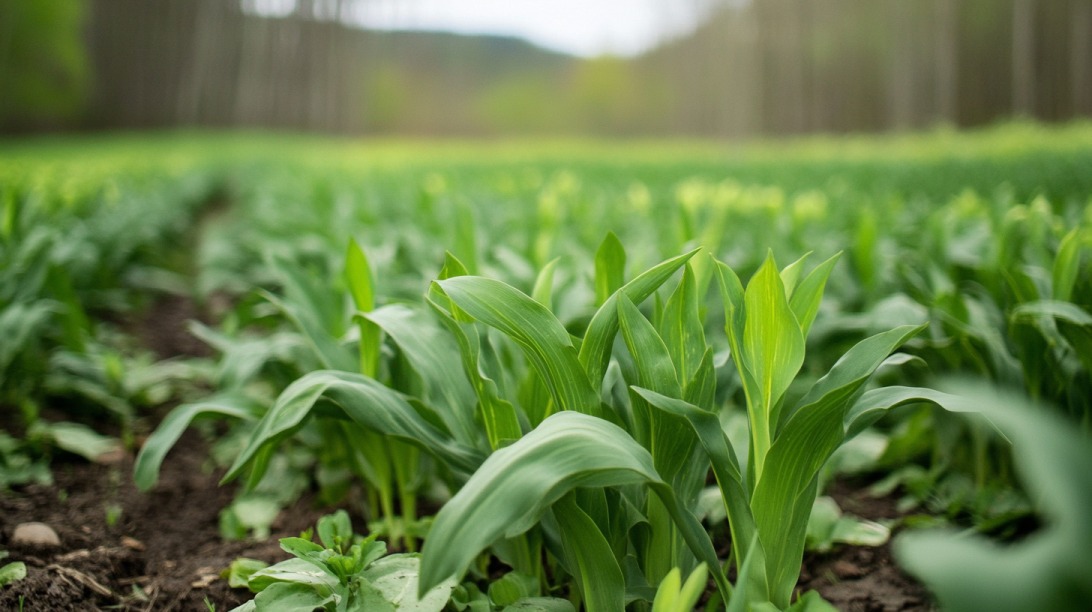Ramps, also known as wild leeks or Allium tricoccum, are prized for their bold flavor, somewhere between garlic and onion. They are native to eastern North America and have long held cultural importance in Appalachian communities.
Highly sought after each spring, ramps mark a seasonal tradition that brings people into the woods to harvest this fleeting delicacy.
Popularity in modern cuisine has only intensified the desire to forage them responsibly.
Identifying Ramps
Ramps grow in clusters, often forming thick patches across forest floors. Leaves emerge directly from an underground bulb and are typically the first visible clue during early spring.
- Two or three broad, smooth, bright green leaves per plant
- Leaves taper to a point and measure 8 to 12 inches in length
- Stems display a gradient of purplish-red near the base
- Slender white bulbs resembling small scallions
- Distinct onion-garlic aroma when leaves or bulbs are crushed
A ramp’s signature scent cannot be overstated. That unmistakable fragrance is one of the most dependable indicators. If a plant lacks that sharp, pungent aroma, it is likely not a ramp.
Botanical Features
Nature produces several plants that closely resemble ramps in leaf structure but differ in scent, growth pattern, and safety. Failure to distinguish between them could lead to poisoning.
Below are common look-alikes and reasons to avoid them:
| Plant | Key Similarities | Key Differences |
|---|---|---|
| Lily-of-the-Valley | Similar in leaf shape and color | Lacks onion or garlic smell; highly poisonous and potentially fatal if ingested |
| False Hellebore | Grows in moist forest environments like ramps | Thick, pleated, spiral-patterned leaves; extremely toxic; contact may cause irritation |
| Bluebead Lily | Leaves resemble ramps in size and arrangement | Produces blue berries later; not poisonous, but inedible and not for consumption |
To confirm an identification, always check for the strong onion-garlic smell and look for the red-to-white stem gradient.
Dangerous Look-Alikes
Several woodland plants resemble ramps at a glance, which can lead to serious mistakes. Foragers must learn to identify these plants carefully, as some are highly toxic and potentially fatal if consumed.
Relying solely on leaf shape or location is not enough, scent and structure are key factors in safe identification.
Lily-of-the-Valley is among the most dangerous imposters. Its leaves often grow in a similar cluster and shape as ramps, but it lacks the telltale onion-garlic scent.
Every part of Lily-of-the-Valley is poisonous, containing cardiac glycosides that can disrupt heart rhythms and cause severe poisoning in even small amounts.
Consuming just a few leaves may result in nausea, vomiting, or even death. It is commonly found in similar shaded forest environments, which adds to the risk of confusion.
False Hellebore is another toxic plant often mistaken for ramps, particularly early in the season. Its leaves are taller and exhibit a ribbed, spiral growth pattern, different from the smooth, flat leaves of ramps.
While its appearance might fool the untrained eye, handling it can cause skin irritation, and ingestion may lead to vomiting, convulsions, and respiratory failure. The plant’s toxic alkaloids make it one of the most dangerous misidentifications.
Bluebead Lily is not toxic but remains completely inedible. Its leaves grow in a similar formation, and foragers new to ramp hunting might mistakenly pick it.
While it won’t cause poisoning, its presence can dilute a harvest and reduce usable yield.
Natural Habitat

Environmental context plays a major role in identifying ramps. Plants thrive in deciduous forest ecosystems with moist, well-drained soils.
Healthy ramp patches often grow under thick canopies before full leaf-out occurs in spring.
- Shaded hardwood forests with abundant leaf litter
- Moist but not waterlogged soil, often near seeps or streams
- Presence of companion trees such as sugar maple, beech, and oak
- Sloped areas with natural drainage
- Elevations between 1,200 and 3,500 feet, depending on region
Many foragers locate ramps in the same places year after year, as patches can persist in undisturbed environments.
Once found, treating the site with care ensures it remains productive for future visits.
Where and When to Forage
Ramp foraging season kicks off in mid-April and typically peaks by early May, although variations in altitude and local climate can cause noticeable shifts in timing. In higher elevations, the ground takes longer to thaw, pushing the season closer to May.
In southern or lower regions, ramps may surface as early as late March. Early spring remains the optimal window, when trees have not yet fully leafed out and sunlight can still reach the forest floor with ease.
Conditions matter significantly when locating ramp patches. Moisture-retentive soil and shade are essential, but drainage must also be good—soggy, waterlogged areas tend to discourage growth.
Forests dominated by maple, beech, or oak often support ideal conditions. When these trees are present, chances of finding ramps increase.
Visual clues and environmental cues can help narrow down locations. Generational knowledge passed through families in the Appalachian region often guides foragers to well-established patches.
Careful observation during hikes in early spring will also reveal fresh green patches standing out against decaying leaf litter.

- Timing: Look between mid-April and early May, depending on elevation and temperature.
- Light: Seek dappled sunlight, areas not yet covered by a dense tree canopy.
- Soil: Favor loamy, well-drained ground that retains moisture without becoming swampy.
- Tree Types: Focus on hardwood forests dominated by maple, beech, or oak.
- Slopes and Drainage: Prioritize south-facing slopes or forested streambanks with natural runoff.
Consistent foragers often revisit previous spots annually, observing changes and growth patterns over time. Ramp hunting rewards those who are attentive, patient, and in tune with seasonal rhythms.
Storing and Preserving Ramps
Freshly harvested ramps deserve proper storage to maintain their crispness and flavor. Short-term storage is simple and effective when done correctly.
Place ramps in a glass or jar filled with a small amount of water, just enough to cover the base of the bulbs. Store the container in the refrigerator.
When maintained like this, ramps typically stay fresh for about five to seven days. Changing the water every couple of days can help prolong freshness and prevent spoilage.
For long-term use, several preservation techniques allow ramps to retain their flavor and nutritional value.
Many of these methods not only extend their shelf life but also create convenient ways to enjoy ramps outside their brief season. Below are effective long-term storage options:

| Method | Process | Usage |
|---|---|---|
| Ramp butter | Blend bulbs and leaves with room-temperature butter, roll into a log, chill, then freeze | Add to pasta, meats and roasted vegetables |
| Drying leaves | Dehydrate leaves using low heat, crumble into powder, or store whole | Use as seasoning, or in broths and teas |
| Vacuum-sealing & freezing | Clean and dry ramps, vacuum-seal to limit air exposure | Preserve full bulbs or whole plants for future use |
| Pickling | Soak bulbs in vinegar brine with spices, store in sterilized jars in the fridge | Serve with sandwiches or charcuterie for a tangy flavor |
Quick preservation after harvest ensures that the bold, garlic-onion flavor of ramps remains vibrant. Delaying storage leads to rapid degradation in both aroma and taste, so handling ramps promptly after foraging makes a noticeable difference in quality.
The Bottom Line
Ramps offer a seasonal delicacy, treasured for their flavor and role in Appalachian heritage. Identifying them with care and practicing sustainable harvesting helps ensure their presence for future generations.
Treading lightly in the forest and respecting nature’s balance transforms foraging into a mindful, rewarding experience.

